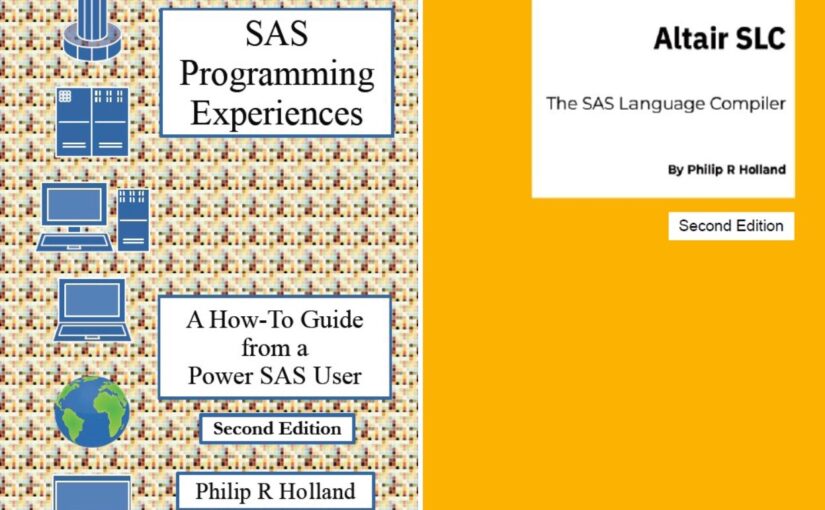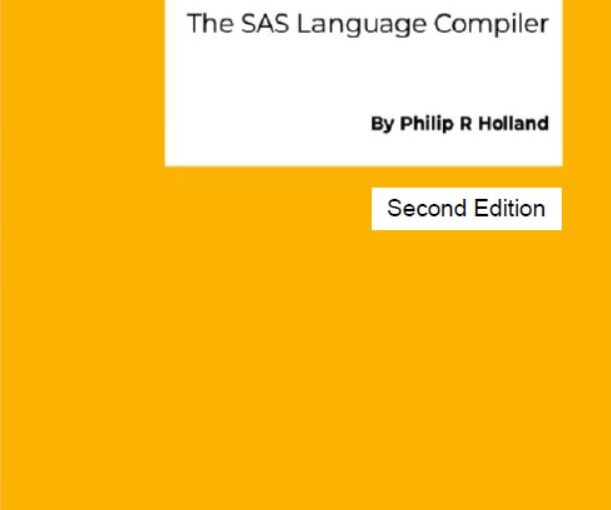![]()
To me retirement only means not earning a salary from my SAS programming, which will, from now on, become a pure hobby. I will also be concentrating on programming using Altair Analytics Workbench and Altair SLC, rather than using SAS Software.
However, there are still ways for everyone to get SAS Value from my 40+ years of SAS programming:
No.1 = 1/2 day SAS training, including digital training materials, for GBP 1,800
- Download the full list of Training Courses for more details.
- Web-based training uses Jitsi Meet, which is limited to 100 participants.
No.2 = 1 month of confidential online support with unlimited questions for GBP 720
- See the web page for [sas.answers @ Holland Numerics] for details on how to subscribe.
No.3 = 1 hour of 1-to-1 SAS video discussion for GBP 100
- Book your hour of SAS video discussion.
- Video discussions use Jitsi Meet, which is limited to 100 participants.
- Topics include:
- Base SAS syntax
- Base SAS functions
- Base SAS formats and informats
- Base SAS procedures
- Data step merging
- PROC SQL syntax
- PROC SQL merging
- PROC SQL updating
- Macro introduction
- Macro syntax
- Macro variables
- ODS Graphics introduction
- ODS Graphics procedures
- Altair Analytics Workbench and Altair SLC introduction
No.4 = 1 confidential remote question for GBP 72
- See the web page for [sas.answers @ Holland Numerics] for details on how to ask a question.
No.5 = 1 ebook copy of course notes to one of my SAS courses from around GBP 11
- My SAS course notes are published as ebooks on Lulu.com, who, unlike Amazon, etc., do not take massive commissions, so I receive most of the published price.
- See my Book Table for more details.
No.6 = 1 ebook copy of one of my SAS books directly from my blog site for around GBP 12.50
- “Saving Time and Money using SAS” is no longer sold in softback, but you can download the ebook directly from my blog site.
- See my Book Table for details of this and other ebooks.
- More ebooks about Altair SLC are currently being developed.
No.8 = 3 months of subscription to the SAS Programming Forum, including access to my online SAS course collection, for 3 x GBP 5
- Details of what the SAS Programming Forum is can be found here.
- See how to subscribe to the SAS Programming Forum, including my online SAS course collection, here.
- See the online SAS course home page.
No.8 = 1 copy of one of my SAS paperback books from around GBP 10.25 or SAS ebooks from around GBP 4.75 from Lulu.com
- See my Book Table for more details.
- More books and ebooks about Altair SLC are currently being developed.
No.9 = 1 copy of one of my SAS softback books from a reseller from around GBP 25
- Although these options appear to be lower in the list than expected, I receive very little from softback books sold, because I received an advance when they were published.
- See my Book Table for more details.
- More books about Altair SLC are currently being developed.
No.10 = 1 copy of one of my SAS ebooks from a reseller from around GBP 3
- Although these options appear to be lower in the list than expected, I receive very little from ebooks sold by resellers, because I received an advance when they were published.
- See my Book Table for more details.










